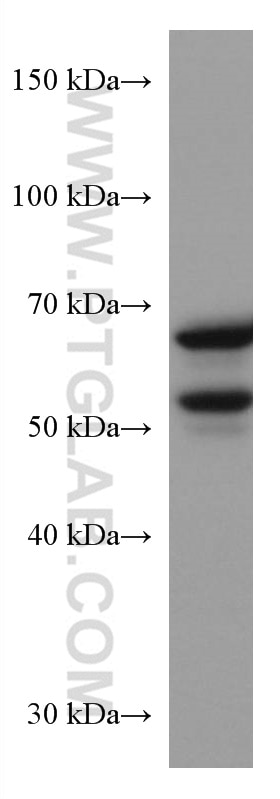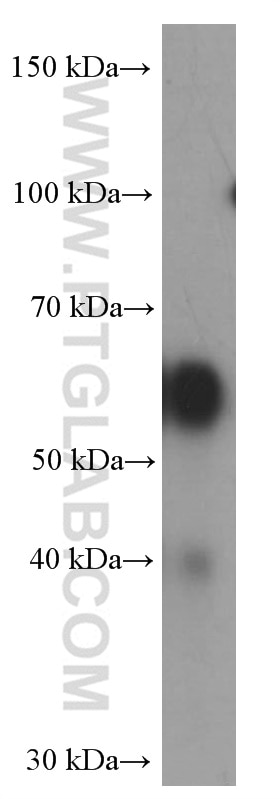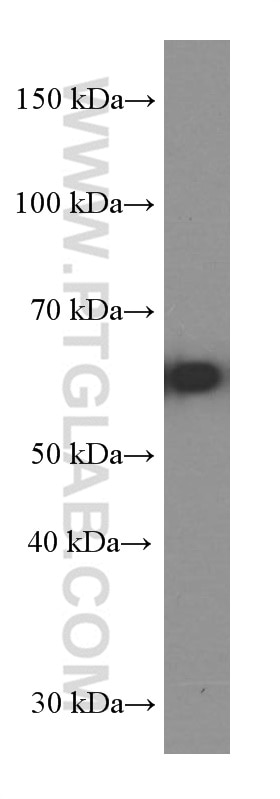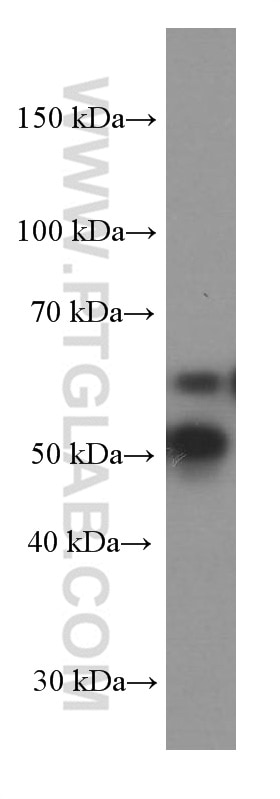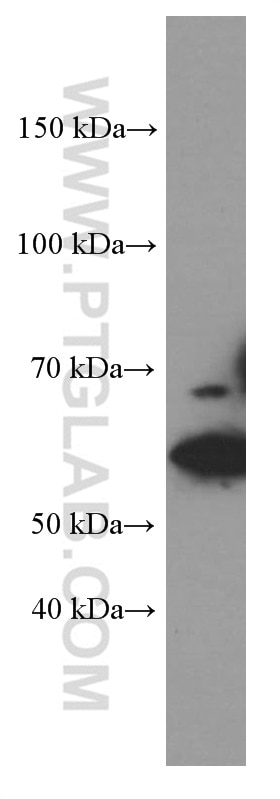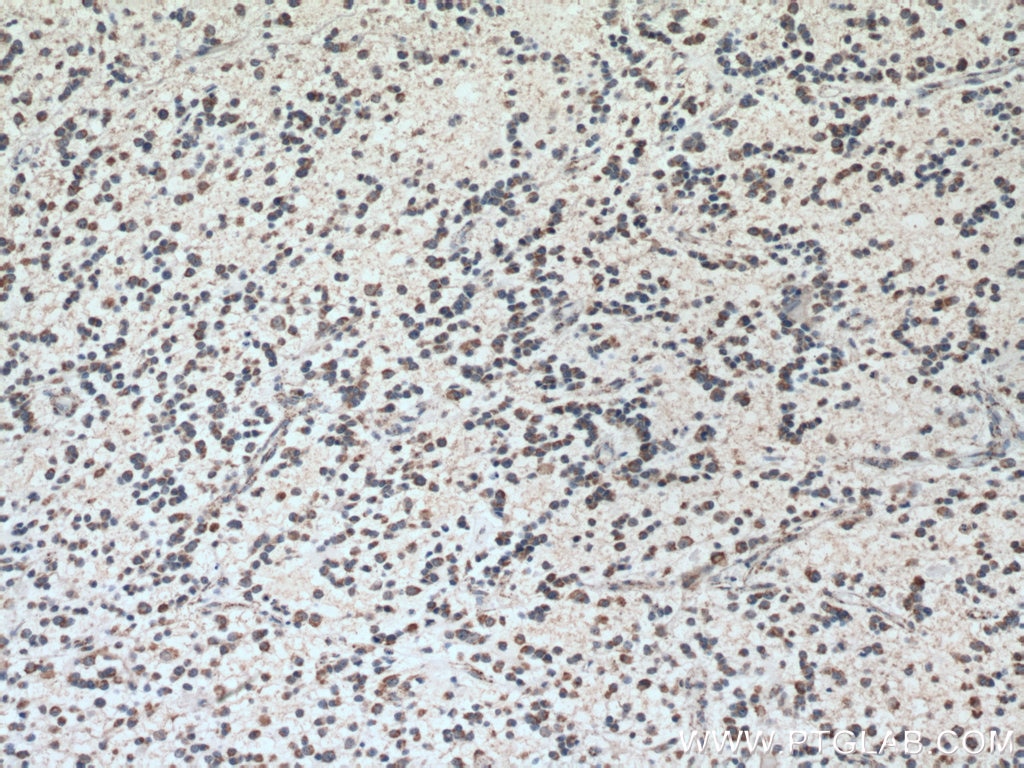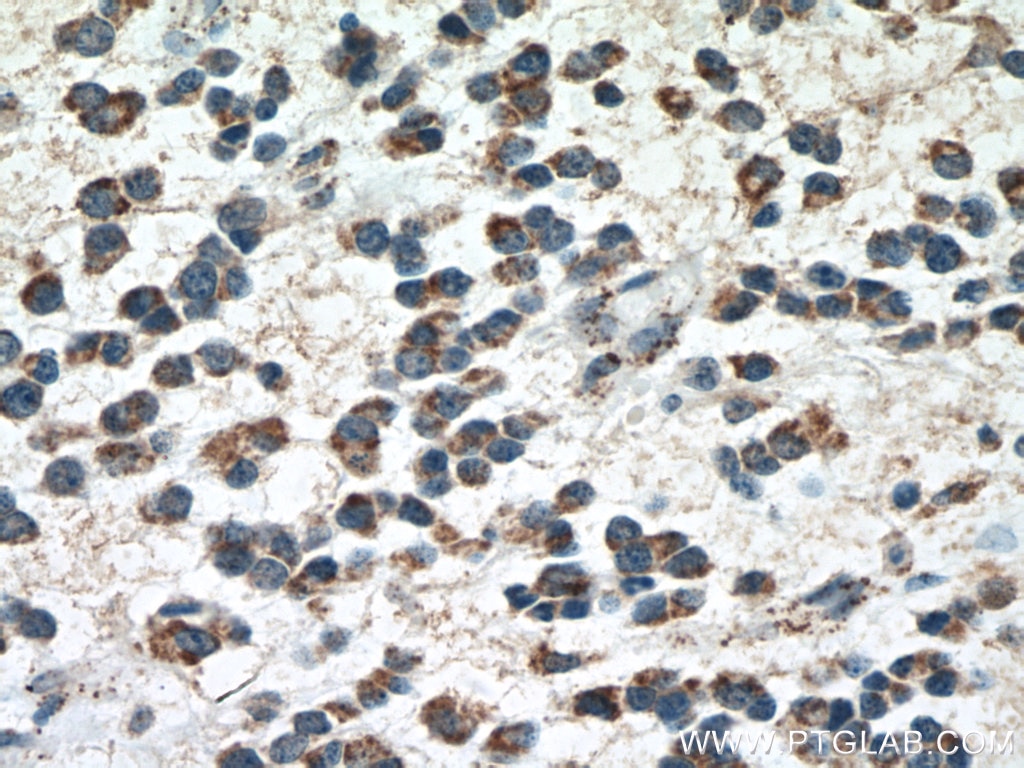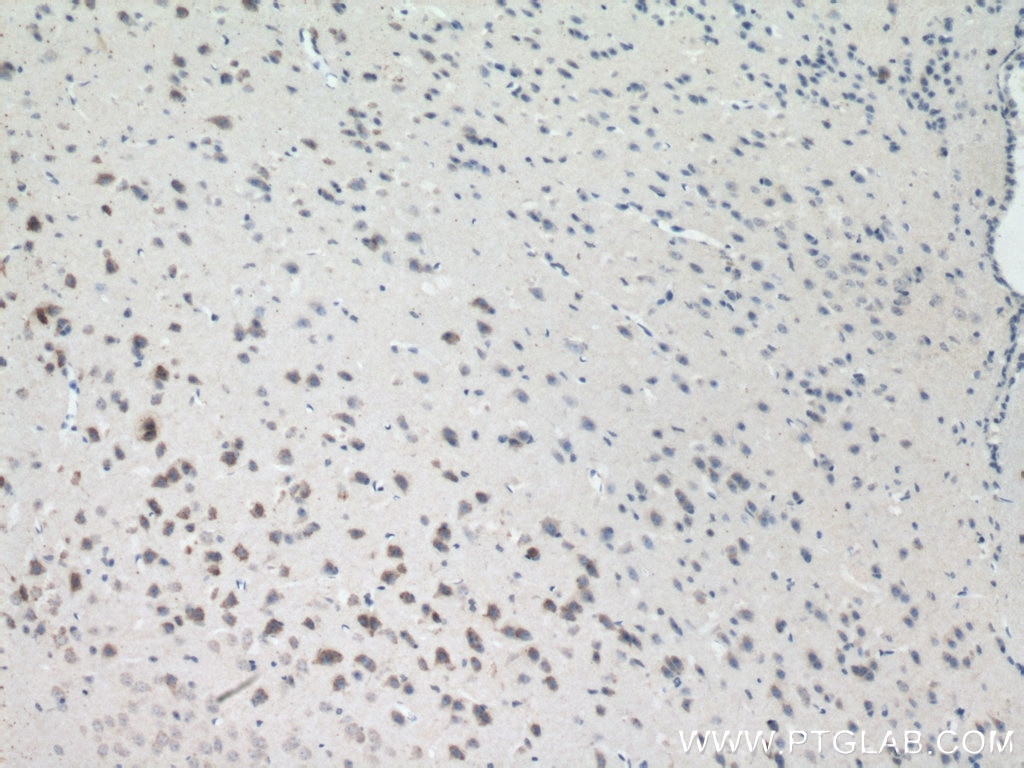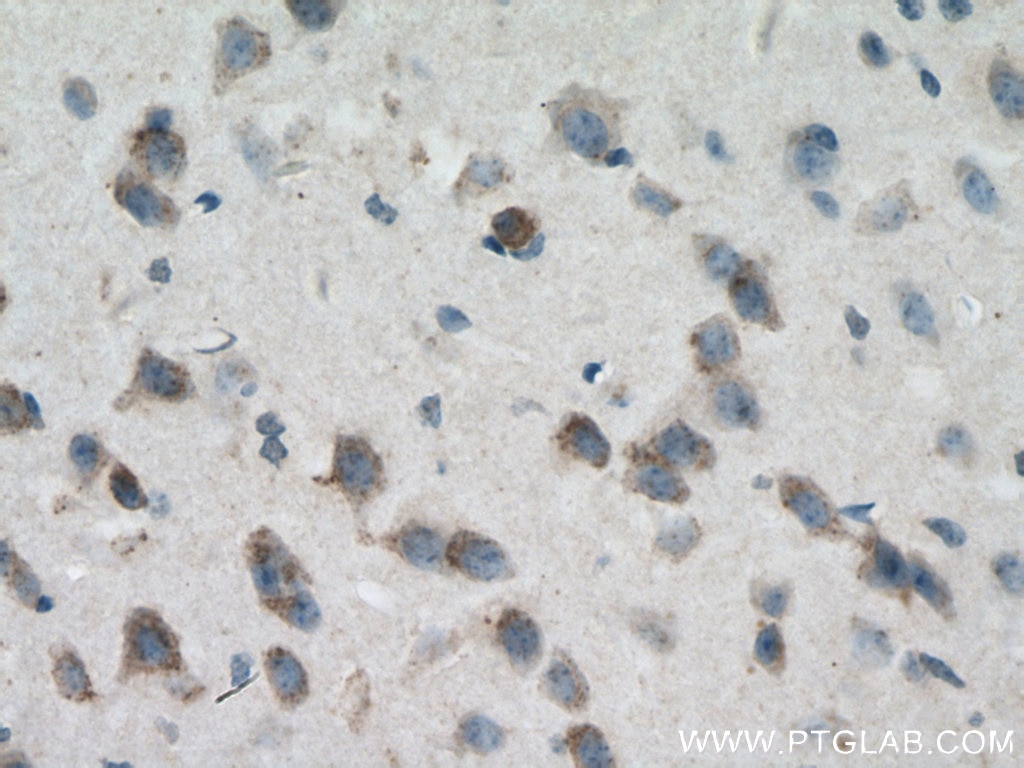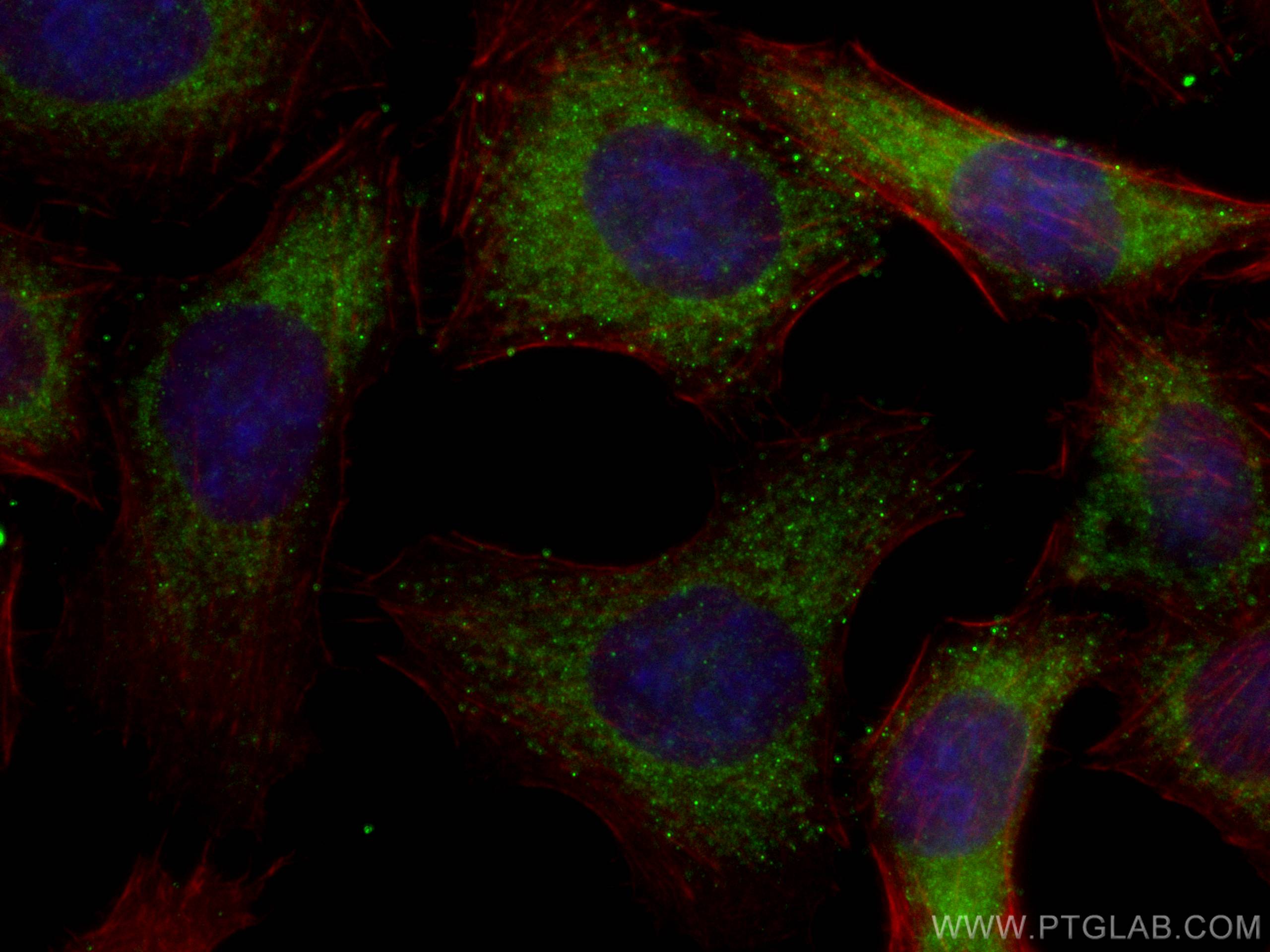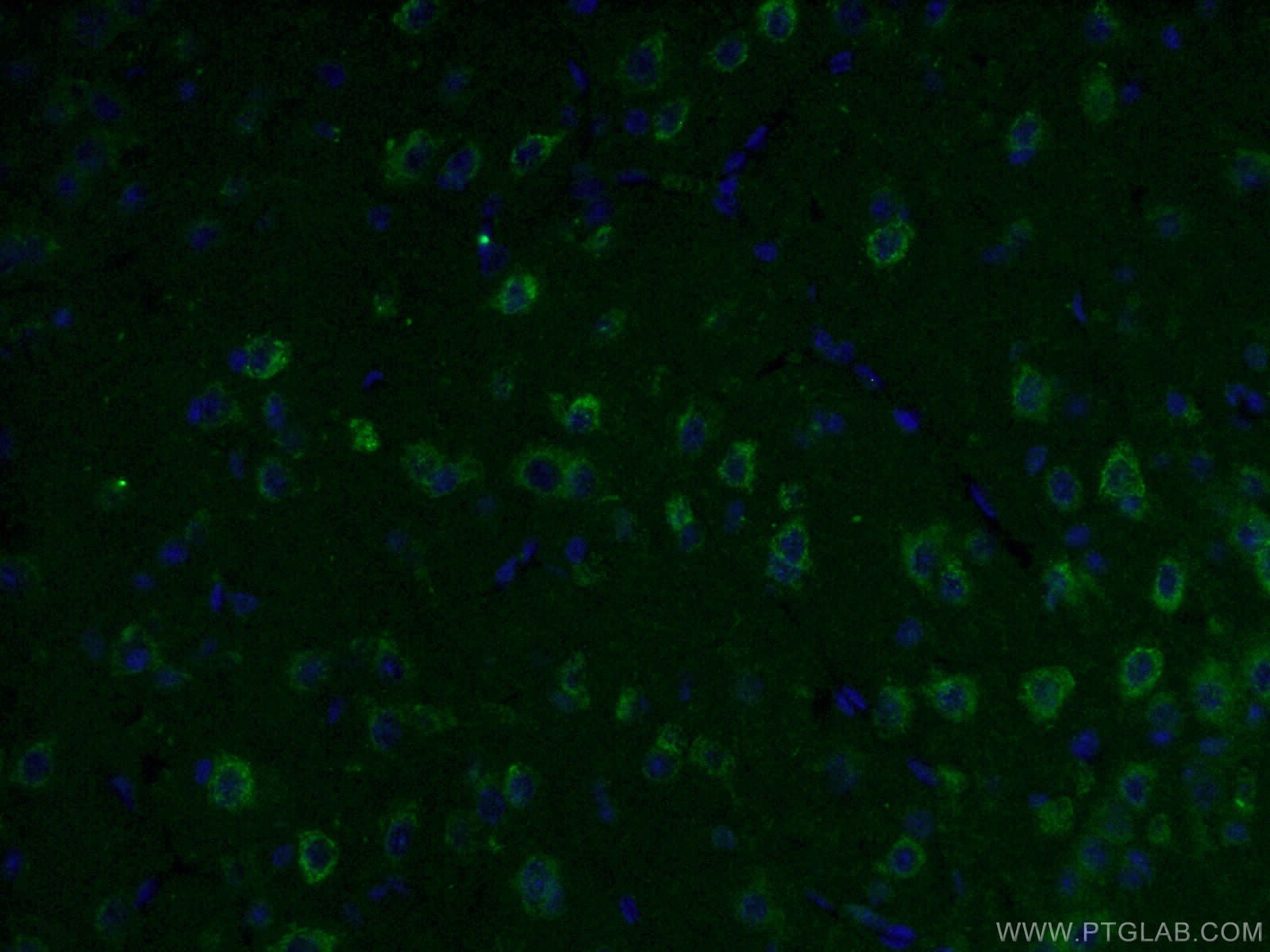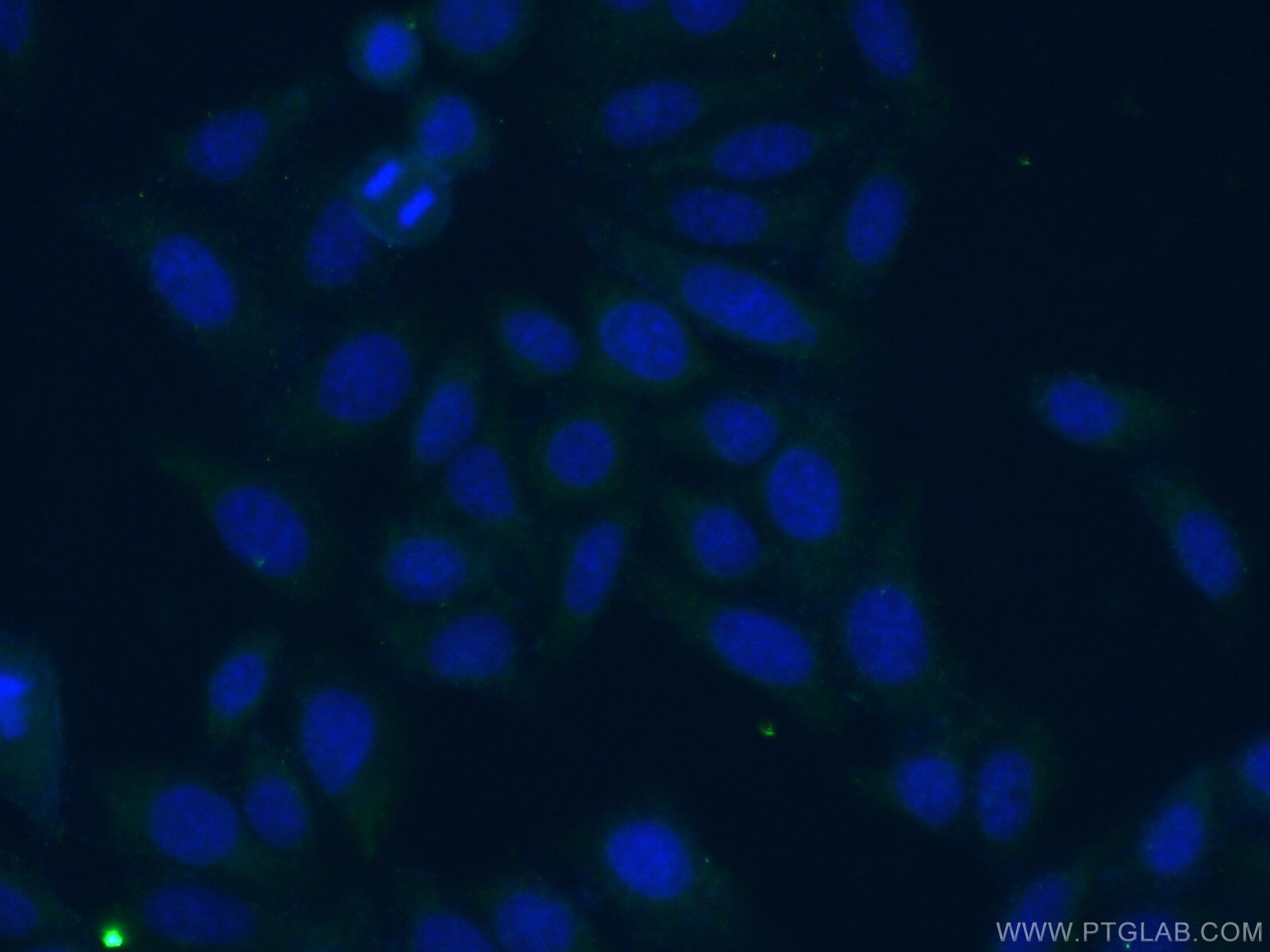- Phare
- Validé par KD/KO
Anticorps Monoclonal anti-KGA/GAC
KGA/GAC Monoclonal Antibody for IF, IHC, WB, ELISA
Hôte / Isotype
Mouse / IgG2b
Réactivité testée
Humain, porc, rat, souris
Applications
WB, IHC, IF, ELISA
Conjugaison
Non conjugué
CloneNo.
3A12A1
N° de cat : 66265-1-Ig
Synonymes
Galerie de données de validation
Applications testées
| Résultats positifs en WB | cellules NIH/3T3, cellules HEK-293, cellules U-251, tissu cérébral humain fœtal, tissu hépatique de rat |
| Résultats positifs en IHC | tissu de gliome humain, tissu cérébral de souris il est suggéré de démasquer l'antigène avec un tampon de TE buffer pH 9.0; (*) À défaut, 'le démasquage de l'antigène peut être 'effectué avec un tampon citrate pH 6,0. |
| Résultats positifs en IF | tissu cérébral de souris, cellules HepG2, cellules L02 |
Dilution recommandée
| Application | Dilution |
|---|---|
| Western Blot (WB) | WB : 1:5000-1:50000 |
| Immunohistochimie (IHC) | IHC : 1:50-1:500 |
| Immunofluorescence (IF) | IF : 1:50-1:500 |
| It is recommended that this reagent should be titrated in each testing system to obtain optimal results. | |
| Sample-dependent, check data in validation data gallery | |
Applications publiées
| KD/KO | See 1 publications below |
| WB | See 5 publications below |
| IHC | See 1 publications below |
| IF | See 3 publications below |
Informations sur le produit
66265-1-Ig cible KGA/GAC dans les applications de WB, IHC, IF, ELISA et montre une réactivité avec des échantillons Humain, porc, rat, souris
| Réactivité | Humain, porc, rat, souris |
| Réactivité citée | Humain, souris |
| Hôte / Isotype | Mouse / IgG2b |
| Clonalité | Monoclonal |
| Type | Anticorps |
| Immunogène | KGA/GAC Protéine recombinante Ag24227 |
| Nom complet | glutaminase |
| Masse moléculaire calculée | 669 aa, 73 kDa |
| Poids moléculaire observé | 58 kDa, 65 kDa |
| Numéro d’acquisition GenBank | BC038507 |
| Symbole du gène | GLS |
| Identification du gène (NCBI) | 2744 |
| Conjugaison | Non conjugué |
| Forme | Liquide |
| Méthode de purification | Purification par protéine A |
| Tampon de stockage | PBS avec azoture de sodium à 0,02 % et glycérol à 50 % pH 7,3 |
| Conditions de stockage | Stocker à -20°C. Stable pendant un an après l'expédition. L'aliquotage n'est pas nécessaire pour le stockage à -20oC Les 20ul contiennent 0,1% de BSA. |
Informations générales
GLS, also named as GLS1 and KIAA0838, belongs to the glutaminase family. It catalyzes the first reaction in the primary pathway for the renal catabolism of glutamine. Glutaminase-, glutamate-, and taurine-immunoreactive neurons develop neurofibrillary tangles in Alzheimer's disease(PMID:1672808).The glutaminase band in AA/C1 cells is more intense than in HT29 cells, in accordance with measurements of glutaminase activity, and had the same molecular mass of approx. 63 kDa. The bands for both cell lines are clearly different in size from both rat liver glutaminase (58 kDa) and rat kidney glutaminase (65 kDa)(PMID:12408749). It also reveals a molecular weight of 83-84 kDa as a phosphate-dependent glutaminase(PMID:447624;7512428). It has 3 isoforms named as KGA, GAM, GAC. This antibody can recognize KGA and GAC.
Protocole
| Product Specific Protocols | |
|---|---|
| WB protocol for KGA/GAC antibody 66265-1-Ig | Download protocol |
| IHC protocol for KGA/GAC antibody 66265-1-Ig | Download protocol |
| IF protocol for KGA/GAC antibody 66265-1-Ig | Download protocol |
| Standard Protocols | |
|---|---|
| Click here to view our Standard Protocols |
Publications
| Species | Application | Title |
|---|---|---|
J Hepatol OGDHL silencing promotes hepatocellular carcinoma by reprogramming glutamine metabolism. | ||
Cancer Commun (Lond) Glutamine metabolic microenvironment drives M2 macrophage polarization to mediate trastuzumab resistance in HER2-positive gastric cancer | ||
Mol Cell Filamentous GLS1 promotes ROS-induced apoptosis upon glutamine deprivation via insufficient asparagine synthesis.
| ||
Cell Rep Glutaminase 1 deficiency confined in forebrain neurons causes autism spectrum disorder-like behaviors | ||
Oxid Med Cell Longev Pharmacological Inhibition of Glutaminase 1 Attenuates Alkali-Induced Corneal Neovascularization by Modulating Macrophages. | ||
Int J Oncol Cryptotanshinone suppresses tumorigenesis by inhibiting lipogenesis and promoting reactive oxygen species production in KRAS‑activated pancreatic cancer cells. |
Avis
The reviews below have been submitted by verified Proteintech customers who received an incentive forproviding their feedback.
FH Sarah-Eve (Verified Customer) (06-02-2023) | Works well
|
FH Longlong (Verified Customer) (03-01-2022) | I'm working on a glutaminase project. Great western blot results and fantastic consistency
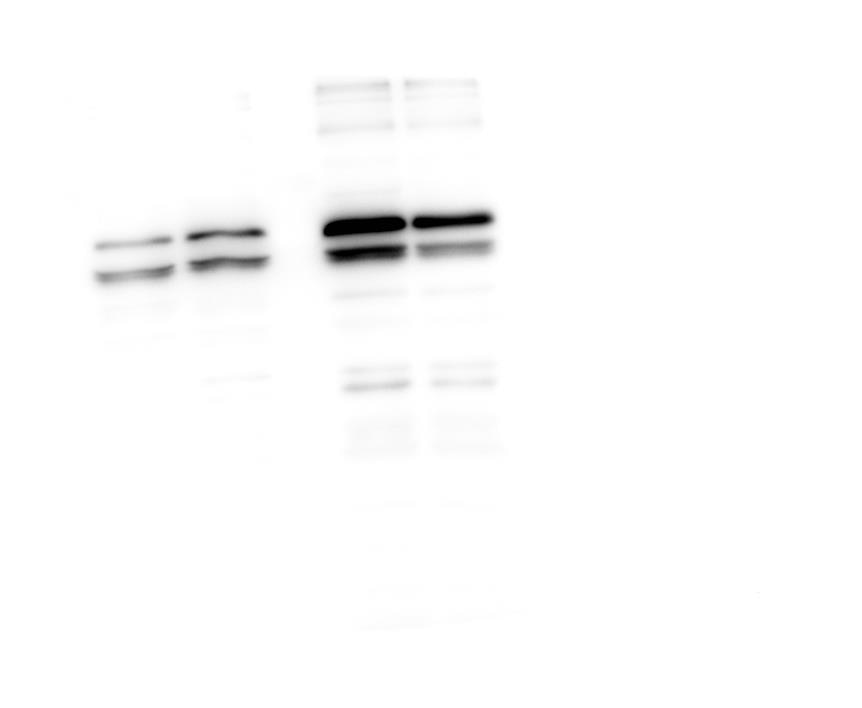 |
